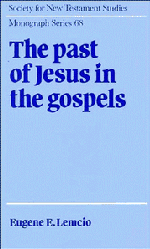Book contents
- Frontmatter
- Contents
- Acknowledgments
- List of abbreviations
- 1 Introduction: faith, kerygma, gospels
- 2 Mark
- 3 Matthew
- 4 Luke
- 5 John
- 6 Summary and implications
- Appendix The unifying kerygma of the New Testament
- Notes
- Bibliography of works cited
- Index of biblical references
- Index of modern authors
- Index of subjects
Appendix - The unifying kerygma of the New Testament
Published online by Cambridge University Press: 06 November 2009
- Frontmatter
- Contents
- Acknowledgments
- List of abbreviations
- 1 Introduction: faith, kerygma, gospels
- 2 Mark
- 3 Matthew
- 4 Luke
- 5 John
- 6 Summary and implications
- Appendix The unifying kerygma of the New Testament
- Notes
- Bibliography of works cited
- Index of biblical references
- Index of modern authors
- Index of subjects
Summary
Introduction
Thesis
The purpose of this study is to offer evidence that, contrary to the prevailing view, there is a central, discrete, kerygmatic core that integrates the manifold plurality of the New Testament. Without denying the diversity that may be found therein, I hope to initiate a return to the largely neglected task of identifying the nature of its unity. My motivation to do so comes from the existence of data that suggest the need to fill a rather sizeable gap in the scenarios currently available for describing the character of early Christianity.
Earlier efforts
The static and kinetic inertia that has to be overcome is considerable, given the history of previous attempts to do so. Perhaps the most famous effort was conducted by C. H. Dodd just over half a century ago. He identified a seven-point outline of primitive preaching by collecting fragments of tradition from Pauline literature that corresponded in all but three items to the pattern of proclamation in the early sermons of Acts. He then tried to show that, within the variety and development, this kerygmatic outline could be detected among the major representatives of the NT. While many Anglo-American scholars initially responded favorably to Dodd's proposal, subsequent studies criticized what seemed to be an artificial harmonizing of Pauline material and an insufficiently critical reliance upon the speeches of Acts as accurate representations of apostolic preaching.
- Type
- Chapter
- Information
- The Past of Jesus in the Gospels , pp. 115 - 131Publisher: Cambridge University PressPrint publication year: 1991
- 1
- Cited by



